
views
In Part I of this multi-part series, I created a railway sector scorecard of the past ten years regime of Prime Minister Narendra Modi. In this part, II analyse the performance of the government pertaining to the metro rail sector, and its relevance and impact on debottlenecking the “urban mobility gridlock” in the country, specifically in the context of fast-growing urbanisation.
The Conundrum
This piece comprehensively addresses the conundrum of urban mobility in the context of fast-paced urbanisation and the role of metro rail in removing the mobility gridlock along with other modes of mobility, including but not limited to other variants of MRTS (Metro Lite, Metro Neo, Monorail and LRTS including modern tramways), bus-based urban mobility (urban bus, BRTS, electric trolly bus, electric buses), intermediate public transport (IPT) and mobility infrastructure for Non-Motorised Transport (NMT), more specifically the pedestrians and cyclists.
While the “urban mobility gridlock in totality” is the backdrop of this piece, my central focus is the growth and challenges in the arena of rail-based urban transport. In Part II of the series, I take a 360-degree view of the metro rail infrastructure Prime Minister Modi inherited in 2014 and the progress his government has achieved in the past ten years. I will conclude with the challenges in hand and the pathway the next government must traverse, particularly integrating the metro rail with all other modes of urban mobility.
The Caveat
Metro rail is costly to construct, operate and maintain. Also, it is not the panacea as not all cities and not all corridors, even of metropolises, need metro rail. Naysayers say the metro rail constructed so far has failed to meet the ridership projection. But that view is half-truth and misses the big picture. As the population of our cities and towns grow fast, metro rail has a leading role to play in conjunction with other modes of mobility. And when it comes to ridership increase, if coordinated mobility infrastructure develops with metro rail at the fulcrum, the ridership will come sooner than later in the most populous country in the world. A case in point is the Delhi Metro, which in the key metrics of ridership per km and per station, has already surpassed that of Beijing, the largest and most patronised metro system in the world.
And the time to fast-track metro rail development is now. Tomorrow will be too late with India already home to the maximum number of million-plus cities in the world after China. It is time for symbiotic rail and bus-based urban mobility and to say “no” to American-style unbridled motorisation chocking urban India. It is in this backdrop that before I dwell upon the core topic, I step back and create the context first – fast-paced urbanisation that sets the tone for why urban mobility is central to the attainment of the vision of Viksit Bharat @2047.
The Context
As Bharat is gearing up for the general elections, it is experiencing tectonic shifts in the key areas of demography, economy, urbanisation, pollution, infrastructure, and key social indicators. The changing pattern of demography, fast-paced urbanisation, cities’ role in the economy and the massive pollution problem killing the urban habitat of the country form the context in which I analyse the urban mobility conundrum facing Bharat today.
The demography
For decades Mainland China was the epicentre of the global demography as the world’s most populous nation. That world order just got appended. With the shrinking of the population in 2022 and 2023, by 8,50,000 and 20,80,000 respectively to 1.409, China has been dethroned by Bharat as the most populous country in the world. The United Nations projects that in July 2024, India’s population will be 1.44 billion. Also, for decades ahead, our population will continue to increase while that of China will continue to decline.
Also, in Bharat@2047, nearly half of the country’s population shall reside in urban areas. To put it in perspective, our population in 2047 shall be thrice that of the total population of the United States of America, the third most populous country in the world.
The urbanisation
The above brings the subject matter of urbanisation in the country to the fore. To put it in context, though the past of India was largely rural, the future of Bharat will be urban. During independence in 1947, nearly 90 per cent of Indians lived in its seven lakh villages and the economy of the country was largely agrarian. As per the 1951 Census, 62.4 Indians i.e., 17.3 per cent of the total population lived in 2863 cities and towns.
It is no longer the case. As per the 2011 Census, despite urban population as a percentage of the total population being relatively lower at 33.10 per cent, in absolute terms, the country’s urban population was 377.10 million residing in 7915 cities. This is the second-highest in the world after China and equals the total population of the US. And the Indian urbanisation story has just begun. Notwithstanding the delayed 2021 decadal census of the country, as estimated by the UN-Habitat Cities report, our urban population was 480 crore in 2021 and is estimated to be 547 million in 2025, 600 million in 2030, 675 million in 2035 and 864 million by 2047.
The stark reality is that between 2018 and 2050, India is expected to add 416 million urban dwellers while China will add 255 million and Nigeria 189 million. Be that the case, India has to find sustainable solutions to urban mobility solution fast, not only for the current urban population but also for the multitude of humanity to be added sooner. And this has special salience for Viksit Bharat because cities and towns are engines of growth.
Urbanisation and the economy
As per the United Nations, in 2007, for the first time in the world, the number of people living in cities and towns overtook those staying in villages. These cities and towns are focal points for activities that are critical to the development of an entire country and are engines of growth. The World Bank estimates that cities already account for 80 per cent of worldwide GDP generated.
India is no exception to this global trend. Our cities occupy only 3 per cent of land but contribute 63 per cent of the nation’s GDP which is likely to grow to 80-85 per cent by 2047. This assertion is based on hard data because as per a recent NITI Aayog report, each per cent point increase in a district’s urban population share in the country contributes to a 2.7 per cent increase in district GDP. If that is the case, time is running out of hand for the country to put global best practices mobility infrastructure in place.
Polluted urban habitat
Air pollution kills and kills fast. WHO estimates annually 7 million deaths are attributable to air pollution in the world. It also has a severe deleterious impact on the health of those living, particularly the more vulnerable populace of sick, children and elderly.
Fast deteriorating pollution in urban habitats in India is already a giant silent life slayer and is raising its tentacles alarmingly fast. As per the latest World Air Quality Report 2023, released earlier this month by Swiss Agency IQAir, with an average annual PM2.5 concentration of 54.4 micrograms per cubic metre, India had the third worst air quality out of 134 countries in 2023 after Bangladesh (79.9 micrograms per cubic metre) and Pakistan (73.7 micrograms per cubic metre).
How severe is the pollution conundrum in Indian cities and towns? The short answer is – it is killing the urban inhabitants. As per the above World Air Quality Report 2023, India is home to 83 of the worst 100 most polluted cities in the world.
A key determinant of dangerous PM2.5 pollution is fossil fuel consumption for the transportation of people and goods in cities and towns and the situation is so grave that the country needs to fast-track provisioning of clean, non-polluting safe, secured, fast, convenient and affordable mobility infrastructure with the metro rail as the fulcrum and other infrastructure of mobility including first mile, last mile and NMT infrastructure as the spoke.
It is time to dwell upon the past present and future of metro rail in the country.
Over to March 6
On March 6, 2024, Prime Minister Modi dedicated to the nation seven different stretches of metro rail on a single day in the east (Kolkata), west (Pune), north (Agra, Delhi Meerut RRTS) and south (Kochi). The total length of the projects inaugurated on a single day exceeded 50 km taking the operational metro rail network in the country above 950 km.
As part of the inauguration that day was a technological wonder, the country’s first partially underwater metro line connecting Howrah and Kolkata with a 520 m underwater tunnel in river Hooghly constructed 13 km below the riverbed and 40 meters below the surface level.
As regards the pace of construction, March 6 will go as a historic day that will propel the country to take the speed of metro rail execution to a much higher level. But the question that comes to mind is – was the inauguration of the metro system in bits and pieces an election eve gimmick or marks a historical shift? To answer this question, I compare the performance with what Prime Minister Modi inherited in 2014.
The Beginning First
With the early arrival of railways, India was the first country in Asia to get rail-based urban transport in Mumbai (1853), Calcutta (1854) and Madras (1931). Also, the country was first to get tramways 150 years ago in 1874.
Also, had the 1919 proposal of Major Walter Erwing Crum, president of the Bengal Chamber of Commerce and a member of the Indian Imperial Legislative Council, of East West Line connecting Calcutta and Howrah with a tunnel under Hooghly River fructified in the 1920s, India would have got Asia’s first metro rail ahead of Tokyo in Japan.
But it was not to be. With British India’s capital shifting to Delhi, Calcutta lost its glory, and the plan was jinxed after the 2021 feasibility study of the Calcutta east-west railway by reputed engineer Harley Dalrymple Hay of London Underground because the construction cost of 3.5 million sterling pounds was considered prohibitive.
When Prime Minister Modi inaugurated the Howrah-Kolkata underground metro, it was the vindication of the tryst to metro Calcutta and India made more than 100 years ago.
Inheritance
The missed opportunity of the 1920s to get the metro resulted in a massive loss to the nation. Though the country got its first 3.5 km metro rail in Calcutta in 1984, its real saga of metro rail as a solution to urban mobility commenced on December 25, 2002, with the inauguration of a small stretch of 8 km of Delhi Metro by then Prime Minister Atal Bihari Vajpayee.
At the beginning of his first term, what Prime Minister Narendra Modi inherited in 2014 was 214 km of metro rail. Also, most of the operational metro was in Delhi with its Phase I (65 km) and Phase II (123- km) completed in record time (Phase I – 7 years and 9 months, Phase II – 3.5 years) and within cost (Phase I Rs 10,570 crore, Phase II Rs 20,500 crore). Metro Rail construction in other cities (Kolkata, Bengaluru, Chennai) was excruciatingly slow and was witnessing significant time and cost overruns. Also, metro rail PPP projects Mumbai Line I and Hyderabad from the day were dogged with controversies.
Indubitably, the above was not the ideal inheritance for fast-tracking the metro rail revolution in the country.
Last Ten Years Saga
The biggest gain of the last ten years has been the acceptance that fast-paced urbanisation is inevitable now and that when it comes to urban mobility, metro rail as a fulcrum has a leading role to play in conjunction with other modes.
As regards the pace of construction, credit goes to the Modi government for fast-tracking the metro rail revolution. India got its first 3.5 km metro rail in 1984 in Kolkata and the next 8 km in 2002 in Delhi. It was 214 km in 2014 in 5 cities and now it stands at 945 km in 24 cities. The addition of 731 km in 10 years @73 km per year is the singular success story. In the process, India has surpassed South Korea (883 km) as the country’s third largest metro rail system in the world and is in the fast-paced race to surpass the US (1345 km) as the country with the second largest metro rail system.
Mainstreaming Beyond Metropolises
A key milestone of the Modi government is the formulation of the new Metro Rail Policy, 2017 which for the first time removed the mandatory criteria of an 8 per cent Financial Internal Rate of Return (FIRR) for the sanction of metro rail projects and replaced it with 14 per cent Economic Rate of Return (EIRR) to the city instead. This has paved the way for cascading the much-needed metro rail revolution away from metropolises to tier 2 and tier 3 cities.
Future Perfect
With 945 km of metro rail in operation, 900 km of systems in various stages of construction and many more projects in the pipeline, it will be incumbent on the next government indubitably to further speed up the project execution. Also, the next government whether Modi 3.0 or not, has its task cut out of taking forward the urban mobility mission that Modi 2.0 espoused – Bharat to have 5000 km of operational metro rail network by 2047 in 50 cities when India celebrates 100 years of independence. As regards, Prime Minister Modi, confident of a third term, he has already made fast-tracking urban public mobility solution as the war cry.
Need of the Hour
Given the pace of urbanisation, time is running out. Be that the case, even 5000 km of metro rail is not aspirational. It is time for Bharat to shift the narrative of urban mobility from personal automobiles to sustainable public mobility. And the nostrum for emerging urban Bharat is three-fold.
One, look the China way – By early 2024, China in around 50 of its cities already has more than 10000 km of metro rail. Also, the pace of construction of metro rail in China is so high that in 2023, it opened much more than the total operational metro rail in India.
Two, metro rail is only one part of urban mobility. China already has the largest BRTS, LRTS, electric trolly bus and electric buses in the world. A case in point is Schengen whose entire fleet of 20000 buses and taxis have gone electric. Also, the country needs provisioning of first and last-mile connectivity.
Three, though the city-wise numbers may vary, nearly half of the urban trips are either walking or cycling. There is not even one city in the country which is NMT-friendly. To make urban mobility sustainable and inclusive, it is time to provide pedestrian and cyclist-friendly infrastructure at war footing.
Much has been done to improve urban mobility, but the gridlock continues and will persist unless urgent corrective steps are taken. And the time is now to take the bull by the horns before the urban mobility conundrum becomes unmanageable. Viksit Bharat will be one where sustainable, inclusive, safe, convenient, and affordable urban mobility is treated as a fundamental right of every citizen.
Concluded
The author is Multidisciplinary Thought Leader with Action Bias and India Based International Impact Consultant. He works as President Advisory Services of Consulting Company BARSYL. Views expressed in the above piece are personal and solely those of the author. They do not necessarily reflect News18’s views.










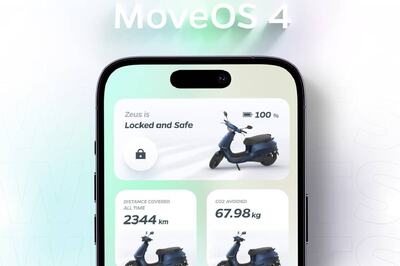
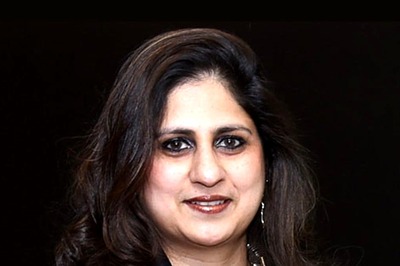
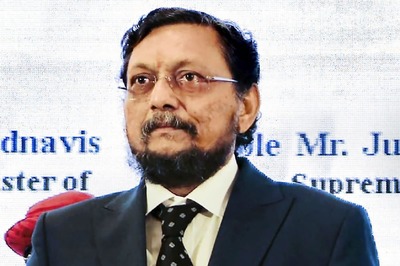

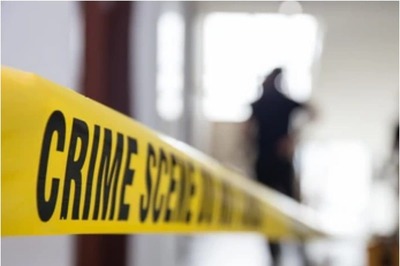
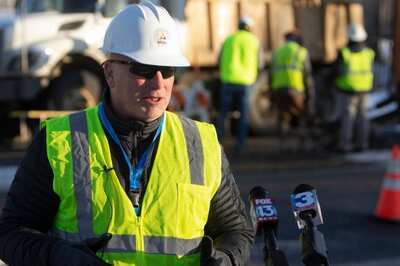
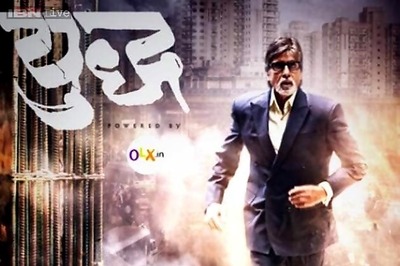



Comments
0 comment